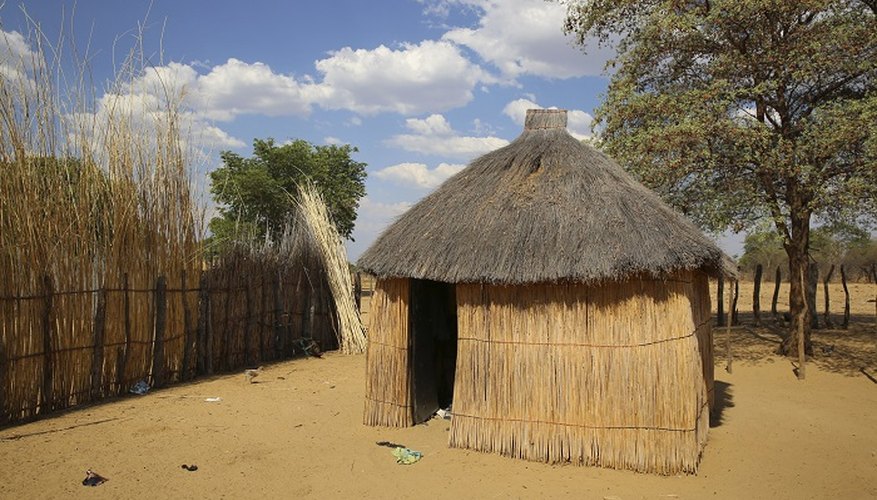Traditionally, African tribes incorporated natural materials from their surroundings into the building of their huts or homes. Natural building materials may include mud and clay, grass or weeds, animal hides, animal dung, stone or sun-dried brick. The shapes, sizes and building materials of African huts differ between countries and peoples. To make a basic African hut, you will need craft materials that resemble the natural materials used in African hut building.
- Traditionally, African tribes incorporated natural materials from their surroundings into the building of their huts or homes.
- To make a basic African hut, you will need craft materials that resemble the natural materials used in African hut building.
Measure a 15 cm (6 inch) diameter circle on the construction paper.
Cut out the circle from the paper.
Fold the circle in half and cut a slit halfway into the centre of the folded circle.
Unfold the circle and glue the cut sides together to form a cone shape.
Cut pieces of raffia 3.75 cm (1 1/2 inches) long.
Turn your cone with its point facing upward and glue pieces of raffia all around the bottom of the cone.
Glue pieces of raffia in a middle row around the cone directly above the first layer of raffia. Let the raffia rows overlap.
- Unfold the circle and glue the cut sides together to form a cone shape.
- Glue pieces of raffia in a middle row around the cone directly above the first layer of raffia.
Glue a third row of raffia around the top of the cone. Let the top row of raffia overlap with the second row. Your cone now looks like a thatched roof.
Take a chunk of brown air-dry clay and shape it into a rectangle about 25 cm (10 inches) long and 5 cm (2 inches) high.
Stand your rectangle horizontally on the table. Take each end of the rectangle and curve it into a circular shape, making sure to leave an inch or larger opening for the door.
Press craft sticks vertically along the top circular edge of the clay to create sides for your hut. You should position the sticks side by side all around the inner edge of the clay.
Take your raffia cone and place it on top of the craft sticks to form the roof. The point of the cone is the top of the roof.
- Take a chunk of brown air-dry clay and shape it into a rectangle about 25 cm (10 inches) long and 5 cm (2 inches) high.
- Take your raffia cone and place it on top of the craft sticks to form the roof.
TIP
Buy raffia, craft sticks and brown air-dry clay from an arts and crafts shop. Raffia is a natural grassy fibre that you can use in crafts.
Instead of using craft sticks, you can use twigs to make the upper walls of the hut.
